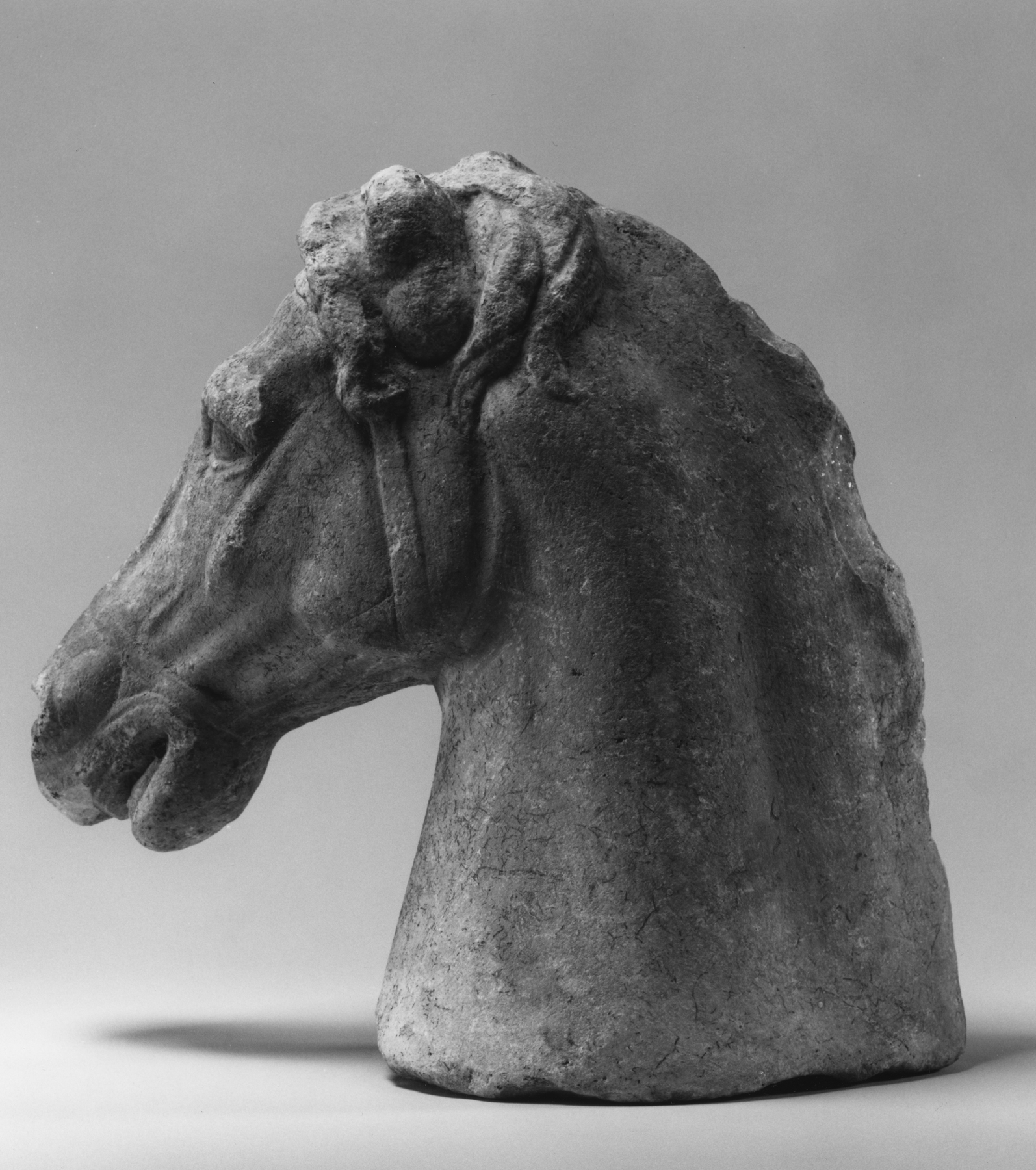Head of a Horse
(Ancient Greece )
This lively horse "protome" (forepart) was found near the temple of Artemis, the patron deity of Sardis in ancient Lydia (in present-day Turkey). It is elaborately executed, with relief details of the reins, a naturalistic modeling of the mane, and a highly expressive quality that would have been even more impressive had its colors been preserved. The horse would have stood by the side of a statue of either Castor or Pollux, known as the Dioscuri ("sons of Zeus"), serving as his attribute.
Horses were highly valued in antiquity. Alexander the Great, often represented as another Dioscurus, honored Bucephalus, the horse that helped him conquer the world, by founding a city in its name.
Provenance
Provenance (from the French provenir, 'to come from/forth') is the chronology of the ownership, custody, or location of a historical object. Learn more about provenance at the Walters.
American expedition to Sardis, 1914; Maurice Nahman, Cairo, [date and mode of acquisition unknown]; Henry Walters, Baltimore, 1929, by purchase [as "from Pyramids"]; Walters Art Museum, 1931, by bequest.
Exhibitions
| 1992 | Sport in Ancient Greece. Palais des beaux-arts (Brussels, Belgium), Brussels. |
| 1988-1989 | From Alexander to Cleopatra: Greek Art of the Hellenistic Age. The Walters Art Gallery, Baltimore. |
Conservation
| Date | Description | Narrative |
|---|---|---|
| 6/16/1988 | Treatment | cleaned; loss compensation |
| 4/5/1990 | Loan Consideration | examined for loan |
Geographies
Turkey, Temple of Artemis (Sardis) (Place of Origin)
Measurements
13 13/16 x 13 1/2 x 5 1/8 in. (35.1 x 34.3 x 13 cm)
Credit Line
Acquired by Henry Walters, 1929
Location in Museum
Accession Number
In libraries, galleries, museums, and archives, an accession number is a unique identifier assigned to each object in the collection.
In libraries, galleries, museums, and archives, an accession number is a unique identifier assigned to each object in the collection.
23.173


